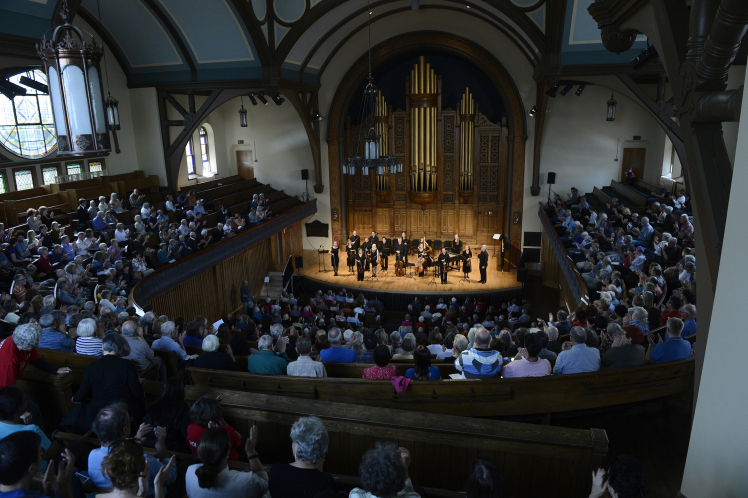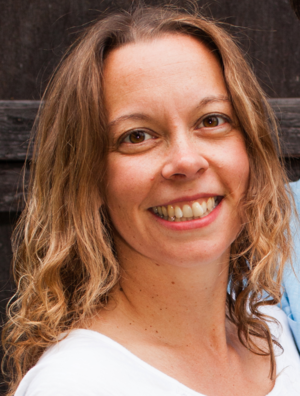Why Faith Groups and Arts Groups Should Cohabitate
Playwright Marcus Youssef upon accepting this year’s Siminovitch Prize for playwriting gave a speech that clarified my interest in the intersection of faith communities with the broader community.
Youssef wrote about his interest in points of intersection and the space between people, spoken and unspoken. He wrote about moments of unexpected connection between people, across culture and groups and about learning from these liminal explorations and the richness that comes from these moments.
That, in a nutshell is what I have been trying to express since taking on the position of the General Manager of Trinity-St. Paul’s Centre for Faith, Justice and the Arts. Theatre, where I spent the majority of my previous professional life, often lacks in diversity of age, culture and ability, in both audiences and practitioners. Life, more generally speaking, does not encourage us to explore those outside of our experience. Young parents gather with other young parents, seniors with those of an age, professional spaces often have a narrow band of generational and cultural diversity.
From the moment that I entered Trinity St Paul’s, I felt the difference that this community centre offered. Babies were being fed by young mothers, the daycare was filled with children, many mid life and elderly people were attending classes or meetings, teens were playing dodgeball. More than that, groups occupying the space, like Dancing with Parkinson’s, Viva Youth Singers, Japanese moms and tot, twelve step groups and Community Living Toronto ensured that we saw all walks of life in all stages, ages and abilities; all the time.
This for me was an entirely new expression of community. It was messy and slow. it required patience. I had to learn to connect with people where they were at and how they were best able to express themselves. It was and is a glorious collision of amateur and professional, expert and explorer. Those tenants, like Tafelmusik Baroque Orchestra, who are world renowned and at the apex of their profession are balanced by and reminded of their journey by the baby in the room next door with the bloody loud drum! The child just learning to sing with Viva Youth Singers is encouraged to pursue mastery by walking past Brent Carvers’ rehearsal. In the age of social media where we retreat ever more into our inner circles, where else do we regularly encounter “the other,” those who are NOT us? Meanwhile, the two congregations of faith resident in the building provide a strong backdrop of social justice and an awareness of our requirement to act with kindness and charity and care for the other; wherever they come from.
Knowing that Trinity-St. Paul’s is far from the only community of faith pushing these boundaries, I began to explore the further dimensions possible when faith buildings chose to broadly open their doors to a cross section of the community. As faith congregation numbers dwindle, there is inevitably a real estate problem; too much space and not nearly enough people to occupy it. While faith leaders wrestle with reintroducing the relevance of faith to this age, I felt that my job was to share and expand this vision of how faith buildings can provide a home to overlapping groups of humanity, living and growing in community together.
And so when the George Cedric Metcalf Foundation offered an opportunity for a Leading and Learning grant, I requested funds for a couple of exploratory trips to other places to see how the general community works with and within faith communities. Travelling with ArtsBuild Ontario and the Toronto Arts Council and wearing both my Trinity St Paul and Faith & the Common Good hat (for whom I’m an advisor), we set out to explore what might be created and how we might enable it in Toronto and beyond. We visited synagogues and churches, former churches and community centres that house multiple congregations.
Over the coming weeks I (and my colleagues) will report back on the wonderful tales of other groups walking this road, culminating in a public presentation in the spring. I hope that you will share with me your stories of these types of spaces as well.
Welcome to the journey. Welcome to community collisions. Let’s see what happens next.


